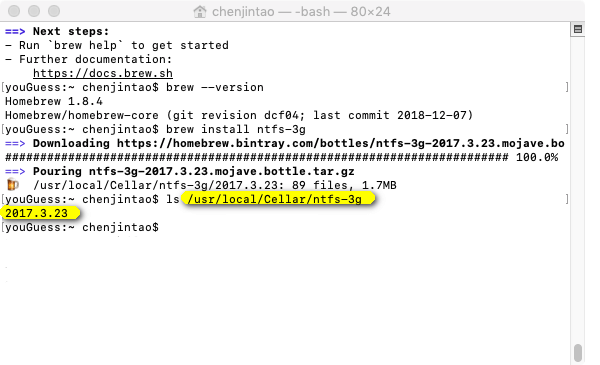

You can get this in the Terminal using the command: diskutil list You need to run a few extra commands to get it working.įirst, find the address of your mounted read-only drive. Mine was /dev/sdb1 I ran ntfsfix -b /dev/sdb1 and that fixed the problem.
#NTFS 3G COULD NOT MOUNT DEV DISK1S1 INSTALL#
NTFS-3G enables your Mac to write to NTFS drives, but it is not automatic. 2 Answers Sorted by: 21 This is the thing that worked: I first needed to get ntfs-3g ( sudo apt-get install ntfs-3g) Run sudo fdisk -l to figure out where the mount point is.
#NTFS 3G COULD NOT MOUNT DEV DISK1S1 HOW TO#
How to Write to an NTFS Drive With NTFS-3G Once you've done that, try re-running the NTFS-3G command. You'll then be prompted to reboot your Mac. Unable to access your drive or volume.Fix Unable to access 'volume' Ubuntu issue.If you are dual booting your ubuntu operating system with. If that happens, run this command as well: brew install -cask macfuse Sometimes Terminal doesn't recognize that you have already installed the macFUSE package. That is another single command: brew install ntfs-3g Once you run the commands to install Homebrew, and you get a confirmation in Terminal, you need to install the NTFS-3G package. From the output, copy the Volume UUID value to the clipboard. Heres how to get read/write support for NTFS drives in Snow Leopard: In Terminal, type diskutil info /Volumes/volumename, where volumename is the name of the NTFS volume. You'll need a couple of extra tools to complete the job, available in a Mac Homebrew package called NTFS-3G.įirst, install Homebrew by pasting this line into the Terminal: /bin/bash -c " $(curl -fsSL )" First, uninstall NTFS-3G or Paragon if youre using either one. The program is a handler it doesn't contain anything to mount and read the files themselves. You'll see your drive listed here, and you can now copy files onto it.ĭownload macFUSE to get started. You can only get there in Finder click Go in the menu bar and select Go to Folder. The third one which I added by label because it did not have a uuid, however, is not mounted after editing. Once it has remounted, it will be available in /Volumes. 3 I edited the fstab file in order to enable writing on ntfs drives and added all three of my external ntfs drives to it. Hit Ctrl + O to save the file, then Ctrl + X to quit Nano. Then copy this line into the file, replacing DRIVENAME with the actual name of the drive you want to access: LABEL=DRIVENAME none ntfs rw,auto,nobrowse You need to follow these instructions for each drive you want to write to. But while macOS can read NTFS drives by default, its write capability hides behind a Terminal hack. Sometimes you may need to write some files to a locked drive only once, and you can do this with built-in Mac tools. We recommend you do not rely on this method for writing to important volumes or as a long-term solution.

There is a very real chance that something could go wrong, resulting in a loss of data on the target drive. Terminal to enable Macs native NTFS write support (not recommended) May 23. The following steps describe a method of enabling the experimental NTFS support in macOS. The command above will display the directory path of your various drives.


 0 kommentar(er)
0 kommentar(er)
